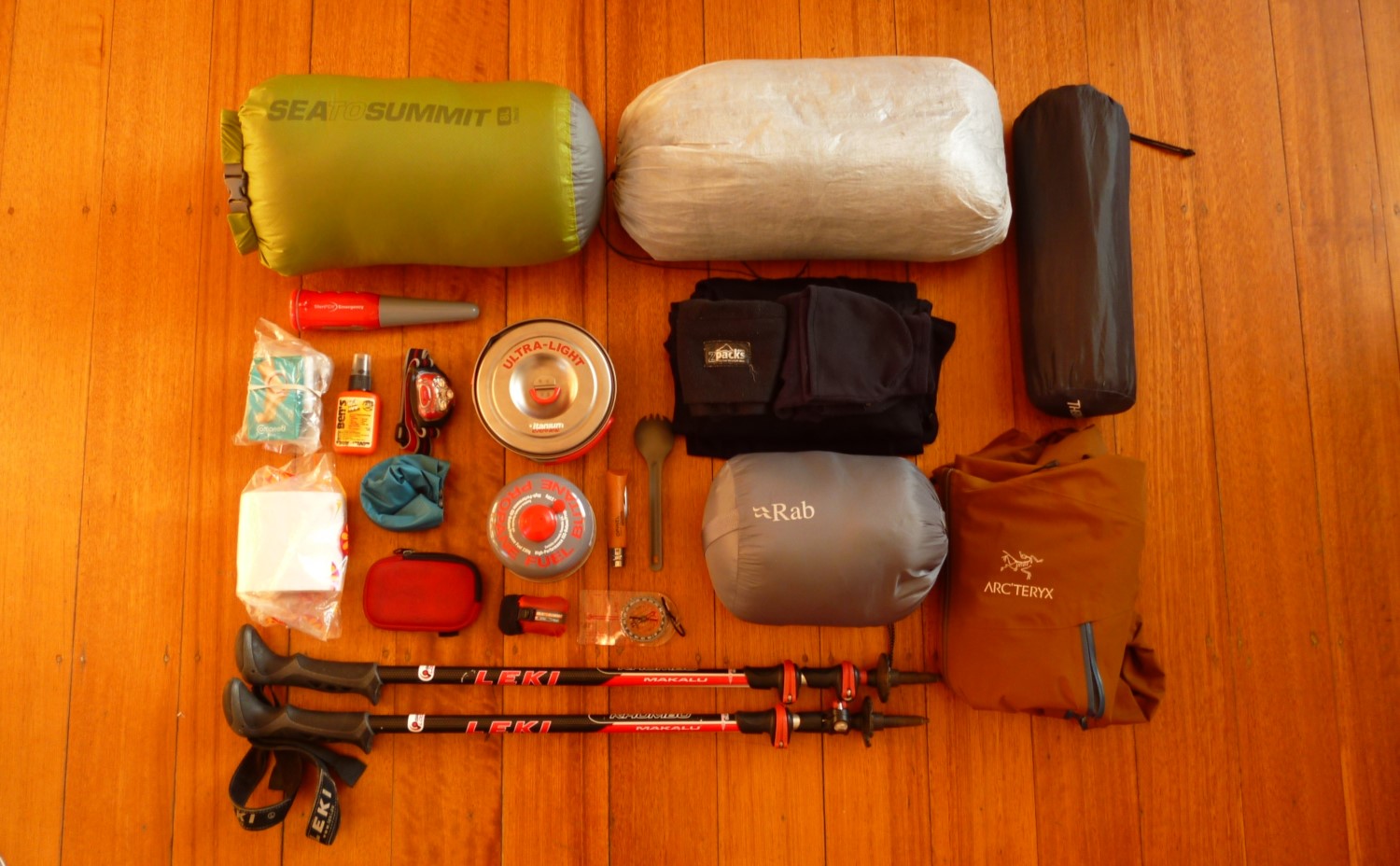Best Scuba BCDs of 2023
JUMP TO: SCUBAPRO HYDROS PRO / TUSA TINA / CRESSI START / HOLLIS HD-200 / AQUA LUNG ZUMA TRAVEL / AQUA LUNG PEARL / ZEAGLE RANGER / APEKS BLACK ICE / BUYING ADVICE
Author: Rose Martin
The Short Version
Best Overall: Scubapro Hydros Pro
Best for Beginners: TUSA Tina
Best on a Budget: Cressi Start
Best for Durability: Hollis HD-200
Best for Traveling: Aqua Lung Zuma Travel
Best All-rounder: Aqua Lung Pearl
Best for Professionals: Zeagle Ranger
Best Trim: Apeks Black Ice
The Long Version
Ever dived in a Buoyancy Control Device (BCD) that didn’t fit properly? If you have, then you will know how annoying it is when a giant BCD keeps floating up your back, or when your BCD is so small it can barely keep you above water at the surface.
Investing in your own BCD is a great way to make sure you’re never stuck with one that doesn’t fit, and it also means you can get a BCD suited to your precise diving needs. BCDs come in a range of styles with no shortage of different features to choose from. That way you can always find the one that’s right for you – whether you’re a beginner, advanced, or professional diver.
While it’s great to have so much choice when it comes to scuba BCDs, it can make shopping around a daunting task. To make things a little bit easier, we’ve reviewed the best BCDs on the market and explained some of their key features.
After all, BCDs don’t come cheap, so you want to be sure that you’re making a wise investment!
If you love reading this review of the best scuba BCDs, then you'll likely love reading some of our other diving content:
Need To Know What To Look Out For?
Scuba diving BCDs are relatively technical pieces of gear and quite an investment – so if you aren’t sure which specs or features you require, be sure to check out our buying advice at the bottom of the article.
Best Overall: SCUBAPRO HYDROS PRO AIR 2
DESIGN: Wing (jacket version also available in men’s and women’s)
WEIGHT MECHANISM: Integrated (removeable)
GENDER: M and F options
DRY WEIGHT: 8–9 lbs
NO. OF DUMP VALVES: 2
PRICE: $$$$
PROS: Extremely ergonomic, fast drying, near-zero inherent buoyancy, folding backplate, easily repaired, durable
CONS: Expensive, heavy (when fully assembled)
Next up we have the Scubapro Hydrops Pro Air 2 (men’s and women’s), a high-end BCD that’s oozing in quality from top to bottom.
The best thing about this BCD is its modular design. Unlike regular BCDs, individual harness components have been injection-molded with a super soft yet sturdy monprene gel and carefully assembled piece by piece. This ‘gel harness’ adapts to your unique body shape, providing ultimate comfort in the water and on land. Plus, the lack of water-absorbing fabric components means that the BCD will feel light (even after dives), dry in no time, and won’t fray with prolonged use. What a win!
The modular construction provides almost no inherent buoyancy, which means you need less weights to descend and can enjoy a less cumbersome dive. And, in the unlikely event one of the modules is damaged, replacing it is super easy – just order another one and it can be fixed in place with zero hassle.
There are no shortage of straps and buckles you can tinker with, and you can even switch from an integrated weight system to a classic system. When combined with the foldable backplate, this results in a surprisingly travel-friendly BCD. Highly adjustable and available in wing and jacket designs as well as male and female versions, you can wear this BCD just how you like it.
Not surprisingly, the Scubapro Hydrops Pro Air 2 comes with a pretty heavy price tag. But with the high quality and easy repair system, along with some good old TLC, there’s no reason why this BCD wouldn’t last you a lifetime.
Best for Beginners: TUSA TINA
DESIGN: Jacket
WEIGHT MECHANISM: Integrated
GENDER: F
DRY WEIGHT: 7.9 lbs (M)
NO. OF DUMP VALVES: 2
PRICE: $$
PROS: Lightweight, extremely comfortable, low profile extends freedom of movement
CONS: Weight system can buckle under too much weight
The TUSA Tina is an awesome option for any female who is new to the world of scuba diving.
The incredibly low profile of the jacket design makes this BCD fit like (surprise) a jacket, and your freedom of movement won’t be restricted when you don this BCD above or below the water. It hasn’t skimped on padding so you’ll feel supported and comfortable, and it’s also light, making it not only a dream to wear but travel-friendly too. The jacket features a subtle female design, which is a nice change from other BCDs that scream ‘I’m a girl’ at you from miles away.
We were surprised to see that despite the economical price tag, the TUSA Tina comes with an integrated weight system. Just bear in mind that the pockets can come loose when they’re used with lots of weight (8+kg), so we recommend adding a few kilos to a belt to spread the load.
It might not feature as many attachment points as high-end heavy-duty BCDs, but there are two generous side pockets and a few metal D-rings for you to play with – more than enough for your basic beginner gear!
Overall, this is one super comfy, portable BCD that’s a great shout for scuba newbies.
Best on a Budget: CRESSI START
DESIGN: Jacket
WEIGHT MECHANISM: Traditional
GENDER: M/F
DRY WEIGHT: 4.8–6.2 lbs
NO. OF DUMP VALVES: 2
PRICE: $
PROS: Generous pocket space, affordable, durable, lots of sizes available
CONS: Weights not integrated, plastic D-rings
If you’re after a BCD that can stand up to the test of time, but don’t have cash to splash, then we recommend the Cressi Start.
This jacket-style BCD comes with everything you need and is constructed from highly durable Cordura that won’t let you down. In fact, it’s so hardy that Cressi Starts are often used by dive centers, so you might have used one before.
The dual side pockets are large enough for a spare mask or DSMB, and there are a couple of plastic D-rings for you to clip on any extra bits and bobs you might need. There are also handy holders for your octopus and pressure gauge that will stop you dangling any gear on the seabed, and the backplate features a durable handle to help you maneuver your gear around before and after dives.
With quick-release buckles on the shoulders, de-kitting becomes a walk in the park, and we like that there are three dump valves so you can always prevent a rapid ascent. Unfortunately, there are no weight pouches on this old school BCD, so you’ll have to don a weight belt instead.
The unisex design is quite plain, and it might not be packed full of fancy features like more expensive models, but rest assured that the Cressi Start will get the job done time and time again – and at a fantastic price point too.
Best for Durability: HOLLIS HD-200
DESIGN: Wing
WEIGHT MECHANISM: Integrated
GENDER: M/F
DRY WEIGHT: 9.4 lbs
NO. OF DUMP VALVES: 2
PRICE: $$
PROS: Super sturdy shell, very accessory friendly, awesome trim, great value for money
CONS: Not the most stylish design
If you’re on the hunt for a durable BCD but want more features than the Cressi Start offers, then the Hollis HD-200 might be just what you’re looking for.
Like the Start, this BCD is super strong thanks to its 1000 denier Cordura construction, but it also boasts an outer shell coated in polyurethane for added protection. What’s more, the HD-200 features corrosion-resistant stainless-steel D-rings almost everywhere you can think of – shoulders, hips, front, crotch, you name it! The dual side pockets are both zippered, and they feature knife-mounting grommets too.
The HD-200 features a wing design and an integrated weight system to provide you with excellent trim in the water. Although the back-inflate design might not be great for total scuba newbies, the high level of robustness along with multiple accessory attachment points makes this BCD incredibly popular with both (advanced) recreational and technical divers.
While it may not be the cheapest (or prettiest) BCD around, the Hollis HD-200 comes with a range of high-end features at a mid-range price, making it definitely worth it overall.
Best for Traveling: AQUA LUNG ZUMA TRAVEL
DESIGN: Wing
WEIGHT MECHANISM: Integrated
GENDER: M/F
DRY WEIGHT: 4.4 lbs (ML/LG)
NO. OF DUMP VALVES: 2
PRICE: $$
PROS: Ultra-lightweight, very foldable backplate, great value for money, super comfortable
CONS: Only one pocket, plastic D-rings
The Aqua Lung Zuma Travel is an awesome BCD for anyone lucky enough to travel a lot in search of awesome dive sites.
The Zuma Travel is not only incredibly light weight (the middle size weighs just 4.4 lbs when dry!) the backplate is also extremely flexible, and can be rolled up into a tiny, suitcase-friendly bundle too. While this BCD comes with an integrated weight system, you can always leave the pouches behind and pick up a weight belt at your diving destination if you’re keen to shed some extra weight.
To keep the weight this low, Aqua Lung did have to skimp on a few things – there’s just one side pocket and the D-rings are made of plastic rather than metal. Fortunately though, when it comes to comfort, this BCD performs surprisingly well – the careful placement of padding on the spine and lumber region certainly makes the most of the minimal padding. Plus, we were surprised to see that this BCD comes with two dump valves as well as four D-rings and knife grommets – not bad for a travel BCD.
Sure, it might not be quite as supportive as a larger, bulkier model, but if portability is the name of the game, then you can’t go wrong with this travel-friendly and surprisingly affordable BCD.
Best Allrounder: AQUA LUNG PEARL
DESIGN: Hybrid
WEIGHT MECHANISM: Integrated
GENDER: F
DRY WEIGHT: 6 lbs (SM)
NO. OF DUMP VALVES: 2
PRICE: $$
PROS: Trim pockets, sturdy, lots of attachment points, hybrid design
CONS: Only three D rings, dump valves are both on the right-hand side
Here’s another solid choice for the ladies (sorry gents), the Aqua Lung Pearl, a mid-range BCD that performs well in every department.
The Pearl is a hybrid BCD that combines the best of both worlds – you’ll have great trim underwater yet you won’t find yourself face down at the surface. The dual trim pockets will further improve your positioning during the dive, and we love how spacious the regular pockets are too. The Pearl also has four D-rings (metal and plastic) for you to attach extra gear, as well as a knife grommet and a choice of two octopus holders.
The integrated weight system is one of the most secure we’ve come across, and it does a great job of taking the weight off your hips. The shoulder straps are shaped to mirror the female form and are highly adjustable (as is the waistband) so you can get the perfect fit. The dual dump valves are easy to find and locate, although they’re both positioned on the right-hand side of the BCD, which might not be ideal for lefties.
The Pearl is a robust BCD that can stand up to some wear and tear, and we like the fact that unlike many female BCDs, the Pearl isn’t overly girlie in appearance.
Best for Professionals: ZEAGLE RANGER
DESIGN: Hybrid
WEIGHT MECHANISM: Integrated
GENDER: M/F
DRY WEIGHT: 8.4 lbs
NO. OF DUMP VALVES: 3
PRICE: $$$
PROS: Twin tank-compatible, heaps of D rings, loads of attachment points, versatile
CONS: Slightly heavy, expensive
The Zeagle Ranger is an awesome BCD for dive professionals that want a BCD for teaching as well as when they’re out having fun (because you can’t teach all the time, right?).
With six stainless steel D-rings to choose from, you’ll have plenty of room for your slates, audible devices, pencils, and other bits and bobs. The modular design of this BCD means that you can remove the integrated weight system to demonstrate weight-belt skills, only to be able to add it back on when you’re diving in your free time. And it doesn’t stop there - with lots of other adjustments you can make (including the option to mount two tanks), this is a popular BCD among technical divers too.
The Zeagle is highly durable thanks to the reinforced 1050 dernier ballistic nylon, urethane lamination, and welded seams used for its construction – it really can handle being used day in and day out. Unfortunately, the high-quality construction has added to the overall weight but maybe you’ll have some lovely students that will offer to carry it for you. We also love that the straps are also highly adjustable, so you can tweak them into the perfect position.
The hybrid design means you’ll showcase perfect trim in the water (the trim pockets will help with this too), but you’ll be able to stay upright when you’re discussing skills at the surface. Although this BCD stands out as an obvious choice for dive professionals, it’s flexibility and durability make it a great option for advanced and technical divers alike – as long as you can afford it.
Best for Trim: APEKS BLACK ICE
DESIGN: Wing
WEIGHT MECHANISM: Integrated
GENDER: M/F
NO. OF DUMP VALVES: 4
PRICE: $$
PROS: Back-inflation design provides great trim, lots of accessory attachment points, trim pockets, 4 dump valves, incredible comfort
CONS: Not for beginners, only available in black
If you’re on a quest to get the perfect trim, then the Apeks Black Ice might just be your new best friend.
The back-inflation design offers incredible trim underwater (although it won’t suit beginners at the surface), and there are trim pockets too so you can perfect your positioning. The various attachment points mean that you can carefully position your accessories, and the four dump valves meant that you can control your buoyancy no matter what position you’re in. Plus, integrated clips hold your hoses in place and avoid creating drag underwater, so there really is no excuse for subpar trim!
The Black Ice features an integrated weight system to free up your hips, and the harness system, which features swivel shoulder buckles and provides excellent support around the cylinder, make this a very comfortable BCD.
Just remember that although the back-inflation design provides awesome trim underwater, you’ll struggle to stay upright for long at the surface, so it’s not an ideal BCD for teaching. For advanced recreational diving though, this BCD has a lot to offer at a reasonable price.
BUYING ADVICE FOR SCUBA BCDS
Clearly, there’s a lot to think about before investing in a BCD of your own, and there are a few technical terms you need to wrap your head around too. So, we’ve knocked together this buying guide to give you the all-important intel you need to find the BCD that’s right for you.
Design
JACKET: Jacket-style BCDs are pretty self-explanatory – they sit over the shoulders and attach at various points across the chest (like a jacket). The air bladder stretches around the waist and chest, leaving the back of the BCD airless.
This comes in super handy at the surface because the air raises your chest and face above the water, so it’s easy to stay vertical or relax while leaning backwards (meaning that beginners typically use jacket BCDs).
WING: Unlike jacket BCDs, wing BCDs have air bladders that are located at the back of the BCD, typically in a horseshoe or donut shape, and the harnesses are usually quite bare. Because the air bladder is on your back and out of the way, your freedom of movement isn’t restricted when the bladder is inflated.
Plus, having the air on your back pushes your front forwards, which improves your trim during the dive. Because of this, it also turns you face down at the surface, which can be a little stressful in rough conditions – we certainly don’t recommend wings for beginners.
Also, bear in mind that the harnesses are usually stripped down to basics, which reduces weight but isn’t great if you need large pockets for teaching.
Wing BCDs are most popular among technical divers, who like being able to swap the air bladders across different backplates, however more recreational divers are now turning to wing BCDs, due to their portability.
HYBRID: Hybrid designs are a fairly recent development, and they try to merge the best of both worlds. They vary in design, but typically feature air bladders at the front and sides as well as at the back. This means you get awesome trim in the water, but staying vertical at the surface isn’t so tricky.
The harnesses have pockets and are bulkier than those found on wing BCDs, but they’re less cumbersome than jacket BCDs because not all of the air will go here (some will go to the back) when the BCD is inflated.
Weight mechanism
TRADITIONAL: Traditional weight mechanisms are super simple – they’re belts that you add weight to. You most likely learnt to dive using one of these because most rental beginner BCDs lack an integrated weight mechanism.
The weights themselves are small metal squares with a hole for the belt to loop around. One great thing about belts is that you can use them for freediving too, but some divers, especially those who dive with lots of weights, can find them uncomfortable on the hips and lower back.
INTEGRATED: Integrated weight systems avoid a belt entirely and instead rely on BCDs with extra ‘pockets’ with slots for weight pouches. The pockets are typically located just in front of the regular BCD pockets, and the pouches have handles that protrude slightly from the BCD.
The pouches contain the weights, and most people use either traditional metal squares or weighted bean bags that come with integrated BCDs when you buy them new – either is fine!
The main advantages of these systems are that the weight sits on the BCD rather than directly on your hips, it’s one less bit of gear to think about, and you won’t have anything dangling from your crotch when you’re in the water. On the flipside, integrated BCDs typically cost more and removing your BCD from the water can be difficult when the weights are still inside.
BOTH TRADITIONAL & INTEGRATED: If you dive with lots of weight, you might find that your weights don’t fit easily onto one belt or into your pouches, in which case, why not use both methods? This spreads the load nicely when you’re in the water and avoids carrying gear absolutely loaded with weight when you’re on land.
SAFETY: Whichever system you go for, make sure your buddy knows where your weights are and how to release them (you can mention this during your pre-dive buddy check). And remember, whether it’s a belt or a pouch, your weight mechanisms needs to be super secure when in use, yet easy to release in an emergency (no tying knots in your weight belt please!).
Portability
WEIGHT: If you’re keen to shed some pounds, and you’re fairly new to diving, then we recommend going for a lightweight BCD. You might lose a bit of pocket space, and it might not last as long as a BCD that’s built like a tank, but there are some awesome travel-friendly BCDs out there that mean you won’t have to compromise too much.
If you’re an experienced diver who travels a lot, then a wing BCD with a teenie harness could be the way to go. If you suffer from a bad back, remember that BCDs with integrated weight mechanisms can be very heavy to heave around, but it might be better for your back when you’re in the water – we recommend playing around with both and seeing which works best for you.
FOLDABILITY: As well as weight, consider how much space you have in your bag – BCDs are pretty big after all. A folding backplate can make all the difference if you worried about space, but also look out for features like flat valves and modular designs.
If space isn’t an issue, though, then we recommend skipping the foldable backplate because they’re generally less supportive than rigid ones.
Features
DUMP VALVES: Your dump valves are located on your BCD, and there’s usually one on the shoulder and sometimes a second one behind your kidney. Some BCDs come with three or four dump valves, and sometimes a tug on your LPI hose will activate one of the valves.
The idea is that you (or someone else) can release air from your BCD quickly (AKA ‘dump’) to control your buoyancy. Instructors often use dump valves when they’re working with beginners, who tend to accidentally overinflate their BCDs while they’re figuring things out. They’re also an essential safety feature for divers of any level – if someone’s having a problem and they start to ascend rapidly, their buddy can dump their air to slow them down.
To make sure your buddy knows how to use your dump valves (and where they are) it’s best to include them in your pre-dive buddy check – you can also fill your BCD with and give them a tug at this point to make sure that they’re working properly.
D RINGS: D-rings are small loops of either metal or plastic (shaped like a ‘D’) that hang off your BCD ready for you to attach accessories. If you dive with lots of extra gear, you’ll already know that your pockets can quickly fill up and that D-rings are super handy. But, if don’t take much with you on a dive, then you might prefer a BCD with fewer D-rings – they’ll get in the way and add to the overall weight (especially the metal ones!).
TRIM POCKETS: Trim pockets let you add small amounts of weight to different areas of your BCD to weigh you down in a way that optimizes your trim in the water. Some people use trim weights that attach to their tanks or ankles but, if your BCD has trim pocket already in place, then it’s one less thing for you to think about.
REGULAR POCKETS: Again, how important pockets are to you will depend on how much gear you take diving but, personally, I love a good pocket. If you’re an instructor, you’ll most likely want a jacket-style BCD with plenty of pockets but if you aren’t fussed about taking gear with you, and would rather shed some extra weight, then a wing BCD might be the way to go.
MORE INFORMATION
If you loved this gear review article, then you'll likely love reading our other diving related content:
Or check out our Gear Reviews Overview Page or Knowledge Base for more epic outdoor info and gear guides.





















